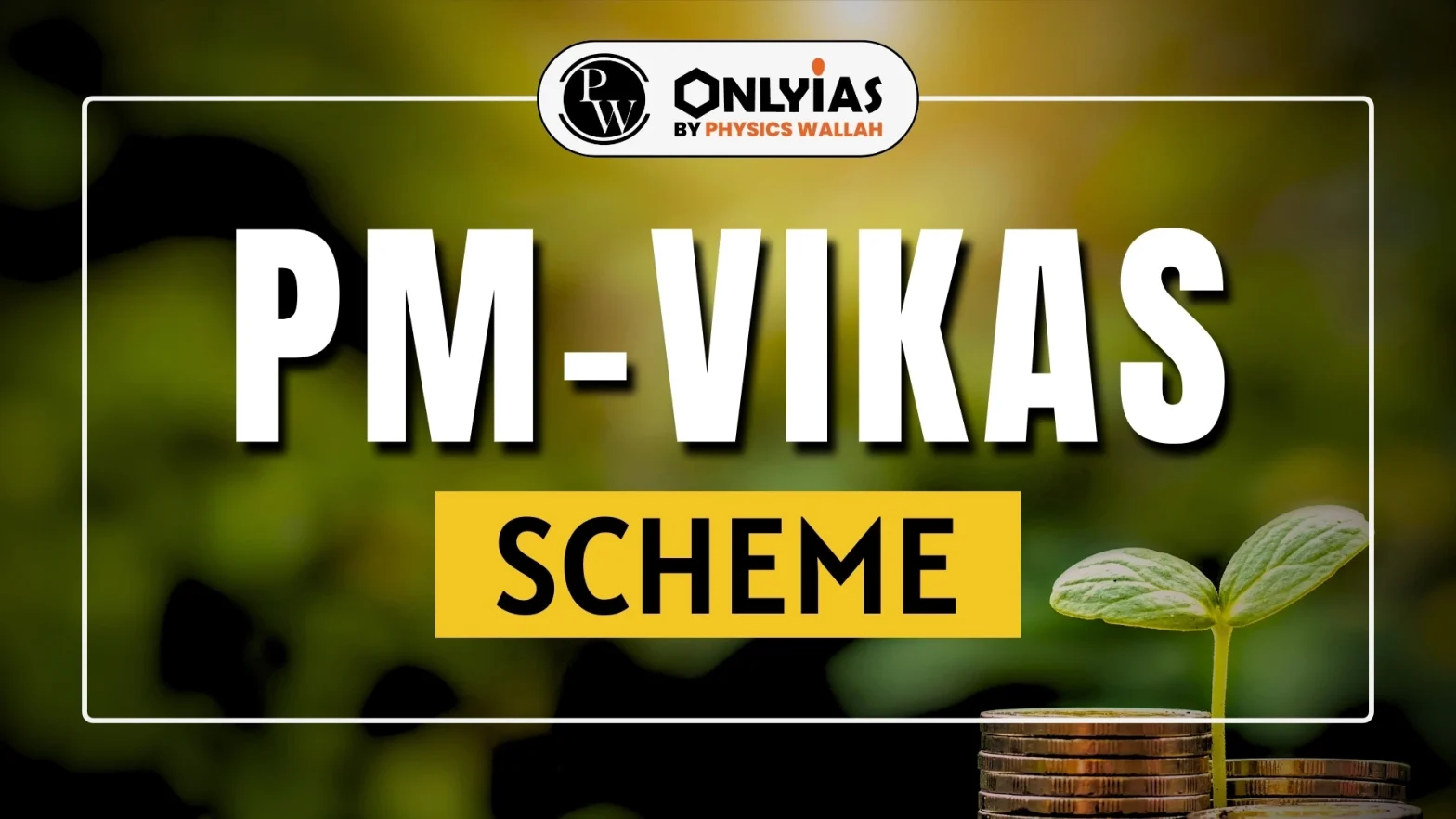PM Vikas Scheme boosts skill development and entrepreneurship for minority communities. Through education and financial help, PM Vikas Scheme ensures sustainable livelihood & cultural preservation.

PM Vikas Scheme (Pradhan Mantri Virasat Ka Samvardhan) is a flagship initiative launched by the Ministry of Minority Affairs (MoMA) to enhance skill development, entrepreneurship, and education among minority and artisan communities. This scheme aligns with the broader vision of the Skill India Mission, integrating with the Skill India Portal (SIP) to create sustainable livelihood opportunities.
The PM Vikas Scheme full form is Pradhan Mantri Virasat Ka Samvardhan Scheme. It is designed to uplift the six notified minority communities—Muslims, Christians, Sikhs, Buddhists, Jains, and Parsis—by providing skill training, education support, and leadership development. The scheme aims to empower artisans and craftsmen by helping them adapt to modern market needs while preserving traditional art forms.
The scheme also centralises five earlier programs—Seekho Aur Kamao, Nai Manzil, Nai Roshni, Hamari Dharohar, and USTTAD—to create a comprehensive support system for minority communities.
| PM Vikas Scheme Overview | |
| Feature | Details |
| Full Form | Pradhan Mantri Virasat Ka Samvardhan (PM Vikas) |
| Ministry | Ministry of Minority Affairs (MoMA) |
| Launch Year | 2024 |
| Target Beneficiaries | Minority communities (Muslims, Christians, Sikhs, Buddhists, Jains, Parsis) and traditional artisans |
| Objective | Skill development, entrepreneurship, education, and heritage preservation |
| Scheme Components | 1. Skilling & Training (Traditional & Non-traditional)
2. Leadership & Entrepreneurship 3. Education Support 4. Infrastructure Development |
| Key Features |
|
| Implementation Strategy |
|
| Financial Support | Provided through National Minorities Development & Finance Corporation (NMDFC) |
| Training Standards | National Skills Qualification Framework (NSQF) compliant |
| Eligibility for PIAs |
|
| Expected Impact |
|
The PM Virasat Scheme is another name for the PM Vikas Scheme. The term “Virasat” refers to heritage, highlighting the scheme’s focus on preserving and enhancing traditional skills and crafts.
By consolidating multiple older schemes under one umbrella, the government ensures better resource utilization, wider reach, and stronger impact for beneficiaries.
The Ministry of Minority Affairs (MoMA) designed the PM Vikas Scheme objectives carefully to ensure long-term impact by integrating traditional knowledge with modern economic systems, helping artisans and workers become self-sufficient and financially stable.
The PM Vikas Scheme objectives include:
The PM Vikas Scheme features a four-component structure, each addressing different aspects of empowerment. These components address different aspects of skill development, entrepreneurship, and education to ensure holistic development:
This component focuses on skill training through two sub-categories:
This component (formerly Nai Roshni) aims to promote leadership and entrepreneurship among minority youth, particularly women:
Previously known as Nai Manzil, this component provides formal education to school dropouts from minority and artisan communities:
This component follows a Hub and Spoke Model, creating Vishwakarma Villages to serve as centers for artisan training and cultural preservation:
The success of the PM Vikas Scheme depends on coordinated efforts from various stakeholders. The government has ensured strong inter-ministerial collaboration to make the scheme more effective.
Funding and eligibility criteria determine who benefits from the scheme and how financial support is allocated.
To ensure effective execution, the scheme also involves Project Implementing Agencies (PIAs), including:
The PM Vikas Scheme is positioned to transform the lives of 9 lakh individuals during the 15th Finance Commission Cycle. The expected outcomes include:
The Pradhan Mantri Virasat Ka Samvardhan (PM Vikas Scheme) is a significant step towards the socio-economic upliftment of minority and artisan communities in India. By combining skill development, entrepreneurship support, education, and infrastructure development, the scheme aims to integrate these communities into the mainstream economy while preserving their rich cultural heritage.
Ready to boost your UPSC 2025 preparation? Join PW’s UPSC online courses today!
The PM Vikas Scheme is a government initiative for skill development, entrepreneurship, and education support for minority and artisan communities.
Muslims, Christians, Sikhs, Buddhists, Jains, and Parsis engaged in traditional and modern trades can benefit from the scheme.
It provides skill training, financial aid, and market linkages to help artisans modernize their businesses while preserving traditional crafts.
The scheme includes skilling programs, education support, entrepreneurship training, leadership development, and infrastructure assistance.
It offers leadership training, entrepreneurship programs, and financial aid to encourage women-led businesses and self-employment.
Eligible individuals can apply through the Skill India Portal (SIP) or the official website of the Ministry of Minority Affairs.

<div class="new-fform">
</div>